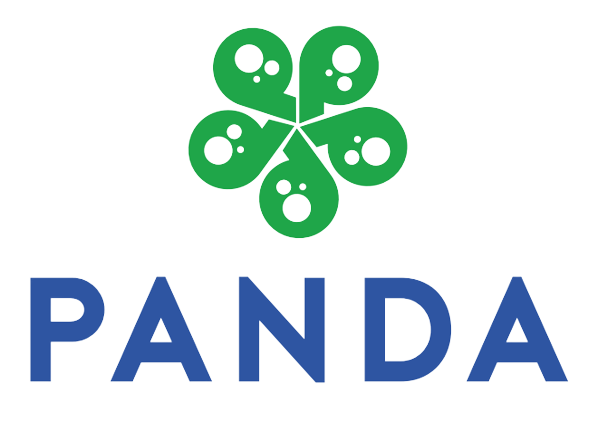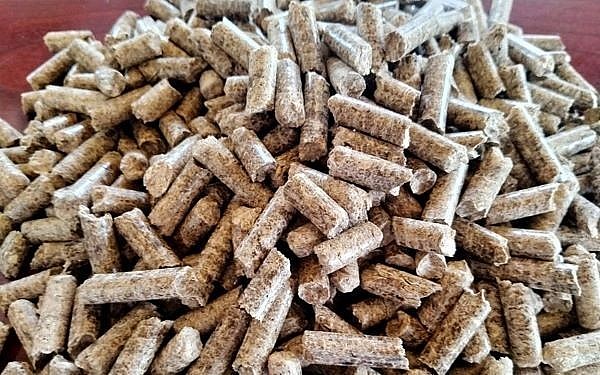From crop by-products (PPTT) such as rice husks, rice straw, corn stalks, banana trees, etc., instead of being discarded, people in localities in the province have taken advantage of it to make raw materials for raising earthworms. fertilizers, especially for animal feed. Utilizing PPTT has brought dual benefits when it helps people save production costs, proactively source animal feed and overcome environmental pollution.
PPTT is a by-product arising from care, harvesting and preliminary processing activities in the field of cultivation. In which, the largest proportion of by-products is rice straw, followed by by-products from rice production such as husk, bran, for maize, the main by-products are cores, leaves, vegetables of all kinds. Field waste products are mainly old stems and leaves left after harvest. From the available by-products, people have used the methods of grinding, silage, drying… to store and create a source of food with high nutritional value for livestock.
At the general farm in Quang Hop commune (Quang Xuong), Nguyen Thi Hoan is currently raising more than 1,000 chickens. For many years now, in order to save on livestock costs, with the area of corn growing on the farm, she has used the stalks, leaves, and seeds of corn that are not of good quality and grinded to make food for chickens. According to Ms. Hoan, corn is one of the main raw materials for processing animal feed, providing nutritional value for cattle and poultry. Accordingly, 1 kg of corn stalks contains from 600 to 700 grams of protein and about 320 grams of fiber, which can be fed directly to chickens or silage for long-term preservation, while corn kernels can be crushed, mixed with rice bran to feed the chicken. Besides, she also uses by-products from green vegetables on the farm as chicken feed.
According to Ms. Hoan, in the context of the current high price of animal feed, the use of by-products from farming can be considered an effective solution to reduce production costs while still ensuring the quality of livestock. , about 4 months after raising broilers can sell broilers and after 6 months the first laying hens. Although raising chickens by this method requires a lot of care, but there are many benefits compared to the method of raising chickens using industrial feed such as: chickens grow fast, have yellow skin, firm and delicious meat, and are popular with consumers. Popularity. Especially, the waste does not have a stench, limiting environmental pollution.
Besides making chicken feed, corn stalks are also nutritious food for cows through silage method. Ms. Le Thi Tram in Hoang Dong commune (Hoang Hoa) said: In order to create a food source for her family’s cows, in addition to growing grass for livestock, she also combines incubating corn stalks and straw to proactively feed the livestock. farming, especially in winter. Feed after incubation will increase nutritional value, crude protein content, increase digestibility, help cows eat more and give higher productivity. Besides, the composting method is also easy to implement, taking advantage of the available conditions in the breeding place such as built tanks, empty cages, plastic barrels… using some materials mixed with straw, then compacted. tight, do not let air in.
Currently, the price of animal feed has increased, and the method of making use of PPTT is widely applied by farmers in the provinces in the province. From corn stalks, cobs, straw, vegetables… people chop, dry, silage, both can take advantage of available raw materials, low investment, and still ensure nutrition for livestock. , Poultry. In addition, the use of dried PPTT as fodder for livestock is a way to help people store for a long time, especially to proactively source food for buffaloes and cows in the cold rainy season. However, the number of livestock households using feed processed from PPTT is still small compared to the actual demand because people do not know the techniques of processing, mixing and preserving food…
In order to process animal feed from PP with high efficiency, Agricultural Service Centers of districts in the province need to focus on organizing training for people on techniques for handling PPTT, from cutting, drying, drying. dried, crushed to alkaline treatment for easy digestion, or sour yeast fermentation method to preserve food for a long time without losing nutrients. When mixing bran, farmers need to master techniques, choose quality ingredients, and determine the nutritional requirements for each type of animal at different stages. Simultaneously, promoting information, propaganda and introduction of effective methods of using communication methods for farmers to learn.

